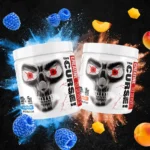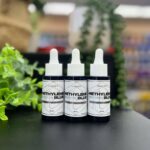Now Reading: Methylene Blue: Unpacking a Historic Compound with Modern Interest
-
01
Methylene Blue: Unpacking a Historic Compound with Modern Interest
Methylene Blue: Unpacking a Historic Compound with Modern Interest

Methylene Blue (MB) is a fascinating compound with a history stretching back over 140 years. Originally known for its vibrant blue dye properties, it has found diverse applications across various fields, from scientific laboratories to specific medical treatments. However, its recent resurgence in certain wellness discussions warrants a clear understanding of what it is and its established, as well as explored, benefits.
What Exactly Is Methylene Blue?
Methylene Blue is a synthetic organic compound and a heterocyclic aromatic chemical. It was first synthesized in 1876 and quickly gained prominence as the first synthetic dye used in biology for staining tissues and identifying bacteria. Beyond its staining capabilities, its unique chemical properties have led to its adoption in several other areas.
Established and Approved Uses of Methylene Blue
Globally, Methylene Blue has well-established and medically approved uses, though it’s crucial to remember these are under strict medical supervision and require prescription.
- Treatment of Methemoglobinemia: This is perhaps its most critical and widely accepted medical application. Methemoglobinemia is a blood disorder where methemoglobin, a form of hemoglobin that cannot bind oxygen, builds up in the blood. MB helps convert methemoglobin back to functional hemoglobin, restoring oxygen transport.
- Diagnostic Agent: In some surgical procedures, MB is used as a dye to highlight specific tissues, fistulas, or to test for leaks.
- Antidote for Cyanide Poisoning: In certain scenarios, MB can be used as an adjunct treatment for cyanide poisoning.
- Antimalarial Agent: Historically, Methylene Blue was one of the first synthetic drugs used to treat malaria, preceding even quinine. While not a primary treatment today, research continues into its potential role, particularly in combination therapies.
- Non-Medical Applications: Beyond human medicine, MB is used in laboratories as a biological stain, in fish tanks to treat parasitic and fungal infections, and in some industrial processes.
Exploring the “Benefits”: Areas of Research and Discussion
In recent years, Methylene Blue has garnered significant interest in wellness communities, often linked to its potential in areas like cognitive function and cellular health. It’s vital to stress that these are largely areas of ongoing research, preliminary studies, or off-label discussions, and are NOT approved therapeutic uses for general self-administration.
- Mitochondrial Support: MB is known to act as an electron carrier within the mitochondria, the “powerhouses” of our cells. By potentially improving the efficiency of the electron transport chain, it’s theorized to enhance cellular energy production (ATP). This has led to speculation about its benefits for overall energy levels and cellular vitality.
- Antioxidant Properties: Methylene Blue can act as an antioxidant, helping to scavenge and neutralize reactive oxygen species (free radicals) that can contribute to cellular damage and aging.
- Neuroprotective Potential: Due to its effects on cellular energy and antioxidant pathways, research is exploring MB’s potential to protect brain cells from damage, particularly in the context of neurodegenerative diseases. This has fueled discussions around its “nootropic” or cognitive-enhancing possibilities.
- Mood Regulation: Some studies and anecdotal reports suggest potential interactions with neurotransmitter systems, leading to discussions about its possible influence on mood and emotional balance.
Important Considerations and Safety Warnings
While the research into Methylene Blue’s broader applications is intriguing, it’s paramount to approach its use with extreme caution, particularly for human consumption or therapeutic purposes outside of approved medical contexts.
- Legal Status in New Zealand: In New Zealand, Methylene Blue is classified as a Prescription Medicine for human therapeutic use by Medsafe. This means it cannot be legally sold directly to the public for self-administration for health or wellness purposes without a doctor’s prescription and dispensation through a licensed pharmacy.
- Risk of Self-Medication: Self-administering Methylene Blue can be dangerous. Dosing is critical, and impurities in non-pharmaceutical grade products can pose significant health risks. Side effects can include nausea, dizziness, confusion, blood pressure changes, and skin/urine discoloration.
- Drug Interactions: Methylene Blue can interact dangerously with various medications, particularly SSRI antidepressants, leading to potentially life-threatening serotonin syndrome.
- Purity and Formulation: Products available for non-medical uses (e.g., laboratory reagents, aquarium treatments) are not manufactured to the same rigorous purity standards as pharmaceutical-grade Methylene Blue intended for human injection or consumption.
Conclusion
Methylene Blue is a chemical with a rich history and valuable established medical applications when used appropriately under professional guidance. While ongoing research is exploring its potential in other health-related areas, it is absolutely essential to differentiate between approved medical treatments and experimental or unproven uses.
If you are considering Methylene Blue for any health condition or purpose, it is imperative to consult with a qualified medical doctor or healthcare professional in New Zealand. They can provide accurate, safe, and legally compliant advice tailored to your individual health needs.

























